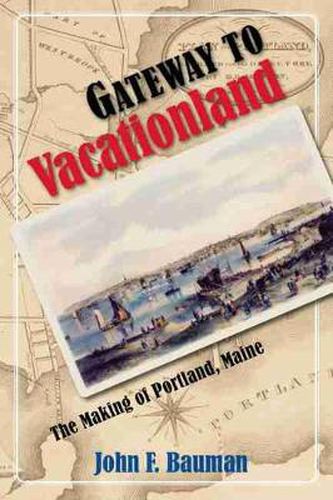Readings Newsletter
Become a Readings Member to make your shopping experience even easier.
Sign in or sign up for free!
You’re not far away from qualifying for FREE standard shipping within Australia
You’ve qualified for FREE standard shipping within Australia
The cart is loading…






Situated on a peninsula jutting into picturesque Casco Bay, Portland has long been admired for its geographical setting - the
beautiful city by the sea,
as native son Henry Wadsworth Longfellow called it. At the same time, Portland’s deep, ice-free port has made it an ideal site for the development of coastal commerce and industry. Much of the city’s history, John F. Bauman shows, has been defined by the effort to reconcile the competing interests generated by these attributes - to balance the imperatives of economic growth with a desire to preserve Portland’s natural beauty.
Caught in the crossfire of British and French imperial ambitions throughout the colonial era, Portland emerged as a prosperous shipbuilding center and locus of trade in the decades following the American Revolution. During the nineteenth century it became a busy railroad hub and winter port for Canadian grain until a devastating fire in 1866 reduced much of the city to ruins. Civic leaders responded by reinventing Portland as a tourist destination, building new hotels, parks, and promenades, and proclaiming it the
Gateway to Vacationland.
After losing its grain trade in the 1920s and suffering through the Great Depression, Portland withered in the years following World War II as it wrestled with the problems of deindustrialization, suburbanization, and an aging downtown. Efforts at urban renewal met with limited success until the 1980s, when a concerted plan of historic preservation and the restoration of the Old Port not only revived the tourist trade but eventually established Portland as one of America’s
most livable cities.
$9.00 standard shipping within Australia
FREE standard shipping within Australia for orders over $100.00
Express & International shipping calculated at checkout
Situated on a peninsula jutting into picturesque Casco Bay, Portland has long been admired for its geographical setting - the
beautiful city by the sea,
as native son Henry Wadsworth Longfellow called it. At the same time, Portland’s deep, ice-free port has made it an ideal site for the development of coastal commerce and industry. Much of the city’s history, John F. Bauman shows, has been defined by the effort to reconcile the competing interests generated by these attributes - to balance the imperatives of economic growth with a desire to preserve Portland’s natural beauty.
Caught in the crossfire of British and French imperial ambitions throughout the colonial era, Portland emerged as a prosperous shipbuilding center and locus of trade in the decades following the American Revolution. During the nineteenth century it became a busy railroad hub and winter port for Canadian grain until a devastating fire in 1866 reduced much of the city to ruins. Civic leaders responded by reinventing Portland as a tourist destination, building new hotels, parks, and promenades, and proclaiming it the
Gateway to Vacationland.
After losing its grain trade in the 1920s and suffering through the Great Depression, Portland withered in the years following World War II as it wrestled with the problems of deindustrialization, suburbanization, and an aging downtown. Efforts at urban renewal met with limited success until the 1980s, when a concerted plan of historic preservation and the restoration of the Old Port not only revived the tourist trade but eventually established Portland as one of America’s
most livable cities.